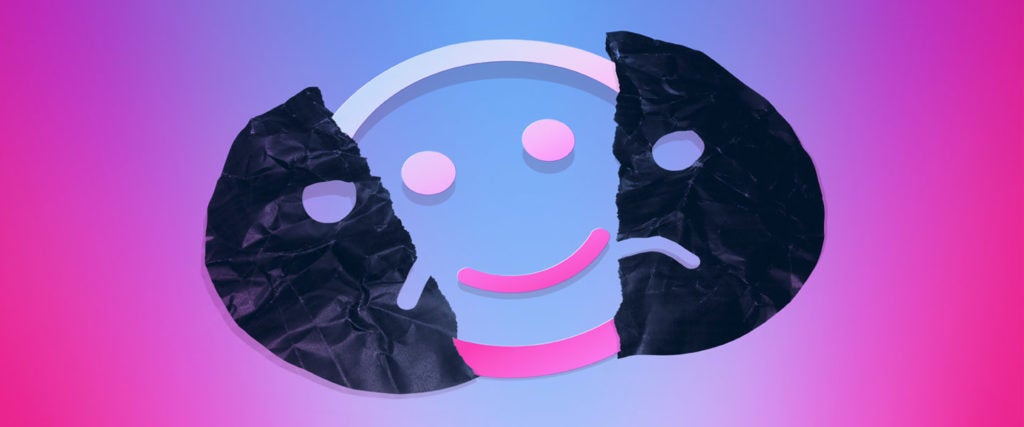Proficient surfers might be pretty happy to learn that getting help for anxiety or depression feels a lot like riding a wave at first. Whether it’s a panic attack, a spell of rage or a sense of shame and helplessness, the first goal of therapy is to teach you how to better ride that wave, or how to better cope with living in your head. For everyone else, figuring out how to live with their mental struggles before they can even entertain the idea of living without them is no day at the beach. It’s just the opposite, in fact — a painful, exhausting and salty process that makes therapy seem like more of a drowning hazard than anything else.
So why bother at all?
Well, for one, coping skills like breathing exercises and meditation reduce the likelihood of behaving in a way that reinforces negative emotions (and in many instances intensifies them). It’s a crucial first step before you start trying to figure out where the gnarly waters are coming from. “It’s difficult to even think about recent waves if they just bring on another new wave,” says therapist Laura Goldstein. “So you must first learn those coping skills in order to be able to do deeper reflection.”
Regardless of what a person is struggling with, making sure they have the tools to deal with whatever problems may come up is something responsible clinicians prioritize as the first stage of therapy. But when so many people who finally get help have been already suffering for so long (the average gap between the onset of symptoms and treatment is seven years), they’re desperate for relief and usually disappointed to find out that therapy isn’t a quick or simple fix. As much as mental illness can be seen as a life sentence, Goldstein notes that remission is possible; yet, because fundamental change is so challenging, very few people get past the first step. This makes conditions like anxiety seem more chronic than they are, when in reality most of us just don’t have what we need to dig deeper yet. “It’s very ineffective to look back at what’s happening without being able to tolerate current emotions,” Goldstein adds.
Unfortunately, these unrealistically high expectations make it that much harder to get to the second stage of therapy, which is when you finally get to look back. This is the main reason Goldstein sees clients drop out of therapy. It could also be why therapy retention rates are so low in general: One study found that 50 percent of people drop out of therapy after three sessions and 35 percent bailed after the first. “With so many people, the disruption of homeostasis does feel acutely worse,” Goldstein says, emphasizing that “it’s a necessary path toward alleviation of chronic misery.”
When people don’t drop out of therapy, they can often struggle with facing deeper issues, get stuck in the coping stage and “likely become exhausted from constantly having to ride their waves with no breaks for rest,” Goldstein warns. “This can eventually lead someone to a breaking point. So really, both the coping skills and the change skills are necessary for overall progress or remission.”
While coping skills might include learning to recognize emotional triggers and finding healthy distractions, change skills include intense self-reflection and analysis of where these triggers come from, and changing ingrained behaviors that reinforce such reactivity. Essentially, if coping is learning to surf, think of changing as solving global warming. It’s hard work, but it would be a lot easier if more people understood why coping and curing are a package deal.
The distinction between coping and curing can be best understood through the treatment for panic attacks, or acute and intense bouts of anxiety that last up to 30 minutes, but it’s true for other mental health issues as well. According to clinical psychologist Aaron Weiner, panic attacks are a lot like finger traps — the harder you try to pull out of them, “the tighter it grips.”
Again, it sounds counterintuitive, but Weiner echoes Goldstein’s sentiments that “the way out is actually by moving toward the discomfort, not away.” The good news is, over time, anxiety attacks (and depression) do become smaller, more spread out and manageable. And once they’re small enough, people can deal with the trigger, which is almost always the fear of an anxiety attack itself. “You can begin to see them like bad heartburn — something that’s very uncomfortable, but time-limited and ultimately can’t hurt you,” Weiner explains.
Both experts agree that more people can bridge the gap between coping and curing their anxiety and depression by talking to friends and family they trust in addition to their therapist, especially when they start to feel frustrated with their perceived progress or lack thereof. Checking in with people with your best interests in mind can help you make sure you’re on the right path and make working on yourself feel less isolating, but also give you motivation to keep moving toward the changing stage.
Goldstein also recommends group therapy for this reason. “This is where group therapy and men’s groups come in so handy,” she says. “It’s so important to know that you’re not alone in these experiences so you don’t feel a further sense of shame or wrongness for being a bad therapy patient.”
If anything, you’re just a shitty surfer — for now.

